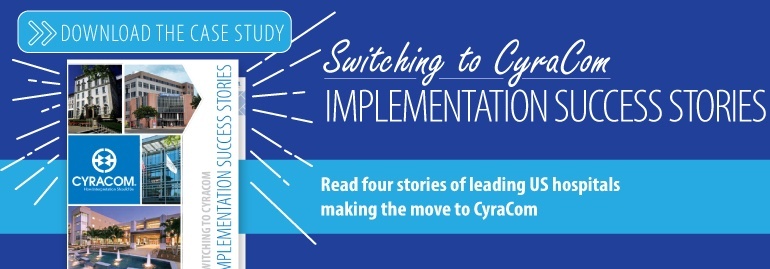
Modern Healthcare recently reported that the use of patient advocates in the US healthcare system is on the rise. These advocates act as representatives for patients who may lack the level of education, language fluency, or general know-how to navigate major healthcare events on their own.
Some patient advocates are also bilingual; most are not. And a disproportionate share of the patient population they’re called upon to help are limited English proficient (LEP): One organization described in the Modern Healthcare piece finds that more than 60% of their patients speak a language other than English.
If your organization uses patient advocates (or may in the future), consider pairing their services with those of qualified, professional interpreters and translators like the ones CyraCom employs. This should allow your LEP patients – and your hospital – to fully reap rewards like:
Improved Patient Outcomes on Critical Metrics
AltaMed, a Southern California health network, found that using patient advocates made a measurable difference on specific patient outcomes like diabetes and hypertension scores. A better understanding of their condition and how to manage it seems likely to have been a contributing factor. Patient advocates were also able to help patients determine their eligibility for social services, allowing them to receive more consistent and comprehensive treatment.
A Better Patient Discharge Experience and Understanding
Modern Healthcare reports that only half of patients released from acute-care hospitals strongly agreed that they understood their care when discharged. 13% also said they were not given information about how to handle their post-discharge care.
Lack of understanding at time of discharge is a main driver of unnecessary readmission, which is much more common among LEP patients. So a combination of patient advocates and professional interpreters which improves patient understanding will likely improve outcomes and reduce readmission as well.
More Coordinated Care across Specialties
The more complex a patient’s case, the more challenging it may be for all of the departments involved to stay on the same page and in communication with the patient.
Patient advocates can act as liaison between patients and the various departments providing them care. Sinai Health’s Erica Rubenstein told Modern Healthcare that “A patient may have a surgical team, an oncology team, a respiratory team all working to together to care for them, and those teams may not always be speaking to one another on any given day. Oftentimes we're called in to be the connection between those teams.”
Does your organization utilize patient advocates to help ensure health equity for disadvantaged patient populations? Have you paired them with qualified, professional interpretation and translation services? Check out our Implementation Success Stories case study to see how easy it is to get started with CyraCom.




